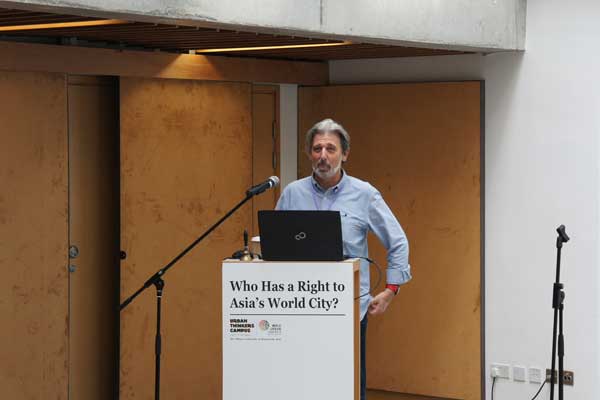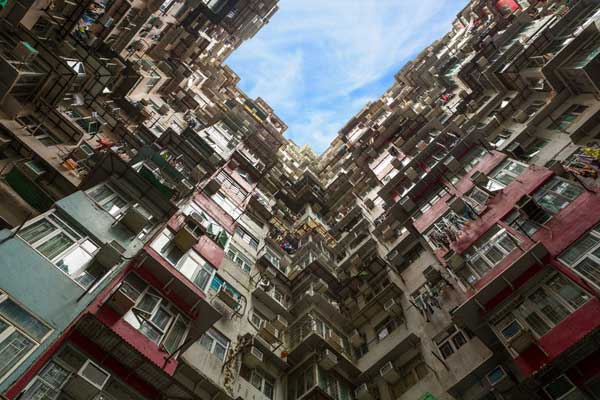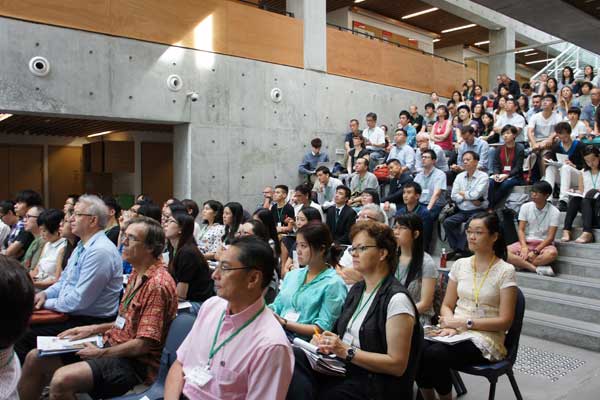Designing Hong Kong, and the Faculty of Social Science and the Institute of Future Cities at the Chinese University of Hong Kong host an event to question who has a right to Asia’s World City? And what is the city we need? Tamsin Bradshaw finds out more from Paul Zimmerman.

September 3rd, 2015
Top image: Victoria Harbour. Photo by Ostill. Source: 123rf.com
Industry professionals and interested members of the general public gathered on 29 August at the Chinese University of Hong Kong to talk about the future of urbanisation in Asia’s World City. The event was an initiative of the UN-Habitat’s World Urban Campaign, and it presented an opportunity for members of the community to voice their thoughts on Hong Kong’s urban landscape, and to consider ideas and solutions.
As co-founder and CEO of Designing Hong Kong, Paul Zimmerman took a leading role in the day’s proceedings. Designing Hong Kong is a non-profit organisation that looks at planning and development in our city, so as to ensure it is sustainable and beautiful for the future. Zimmerman is also District Councillor for the Pok Fu Lam constituency.

Paul Zimmerman speaking at Urban Thinkers Campus
What inspired Urban Thinkers Campus?
The City We Need is a paper that is being developed by the United Nations, they’re developing the new urban agenda they’re going to agree on next year.
We’re going to hit 70 per cent of the world’s population living in urban areas next year. So how do you get good cities? There are so many different aspects: there’s the engineering aspects, like resilience; the security and safety aspects; the social aspects, like having a nice place to live, sanitation, the ability to provide medical care. Then there are the economic aspects: do the people living in this city have jobs?
Let’s talk about who has a right to the city.
A key question is, can people afford to live in this city? In Hong Kong, we’re experiencing an increase in income disparity; the affordability of housing is an issue.
Hong Kong actually scores pretty well on urban planning. It’s been quoted around the world as a good example when it comes to resilience, safety, sanitation and water quality. Our energy output on transport is very low because our public transport system is so good. We have a low carbon footprint because we don’t have as many private vehicles as other cities. We have a high life expectancy – 82, 84 – part of that is because if there’s an accident… you get to the repair shop very quickly.

Looking up. Photo by Vichaya Kiatying-Angsulee. Source: 123rf.com
What makes Hong Kong unique?
We have a weird situation compared to any other city – other than Monaco or Gibraltar – we have an ability to determine our boundaries. Unlike New York, for example, we have an ability to determine who can come in. There is a big value gap between China and Hong Kong, the Philippines and Hong Kong and Malaysia and Hong Kong. If you open up the boundary entirely, the city will be overwhelmed with people. Our infrastructure and the available land and housing are very finely tuned to the exact population that is here today. Any big change will throw things off kilter. We’re lucky we can control this – many other cities can’t. Nairobi can’t, Shanghai and Beijing can’t really.
What is the city you think we need in Hong Kong?
The biggest opportunity is to design the city for more human scale. Don’t sell such large plots of land, diverse land ownership, shop entrances at street level – go back to the shophouse concept. The entrepreneurial opportunities are much greater if everyone owns their own [space] rather than one guy owning everything and dictating that he wants a coffee shop here and a bakery there.

Crowd at Urban Thinkers Campus
And looking at our city, how can we make it more pedestrian friendly?
We’ve given up a lot of space at street level for vehicles and not for pedestrians. The city’s daily worry is keeping the traffic moving, keeping the buses moving, getting people to work. The pavement is just what’s left over, or it’s a footbridge to make sure they don’t interfere with vehicular flow. Our pedestrian environment is very unfriendly. This is what human scale is about… making it more pedestrian friendly so that people are willing to walk further and longer.
We’ve also got to cherish our proximity to the great outdoors, to country parks and wilderness. You walk up the hill from the Hong Kong Bank Building and in 15 minutes you’re on the mountain.
We’ve got to make our rural areas more accessible and more enjoyable for Hong Kong. The villages could be recognised as amenities, with restaurants, rest facilities and hostels where people stay overnight.
Designing Hong Kong
designinghongkong.com
Urban Thinkers Campus
unhabitat.org/urbanthinkers
INDESIGN is on instagram
Follow @indesignlive
A searchable and comprehensive guide for specifying leading products and their suppliers
Keep up to date with the latest and greatest from our industry BFF's!

Within the intimate confines of compact living, where space is at a premium, efficiency is critical and dining out often trumps home cooking, Gaggenau’s 400 Series Culinary Drawer proves that limited space can, in fact, unlock unlimited culinary possibilities.

XTRA celebrates the distinctive and unexpected work of Magis in their Singapore showroom.

To honour Chef James Won’s appointment as Gaggenau’s first Malaysian Culinary Partner, we asked the gastronomic luminaire about parallels between Gaggenau’s ethos and his own practice, his multidimensional vision of Modern Malaysian – and how his early experiences of KFC’s accessible, bold flavours influenced his concept of fine dining.

In this candid interview, the culinary mastermind behind Singapore’s Nouri and Appetite talks about food as an act of human connection that transcends borders and accolades, the crucial role of technology in preserving its unifying power, and finding a kindred spirit in Gaggenau’s reverence for tradition and relentless pursuit of innovation.
The internet never sleeps! Here's the stuff you might have missed

We spoke to the Belgian architect about his work ‘Optô,’ which was on display as part of the exhibition ‘Poetica’ by WonderGlass at Milan Design Week 2025.

Chinese handbag design firm, Songmont, has seen ARCHSTUDIO transform a disused factory into a space of great engagement and joy.